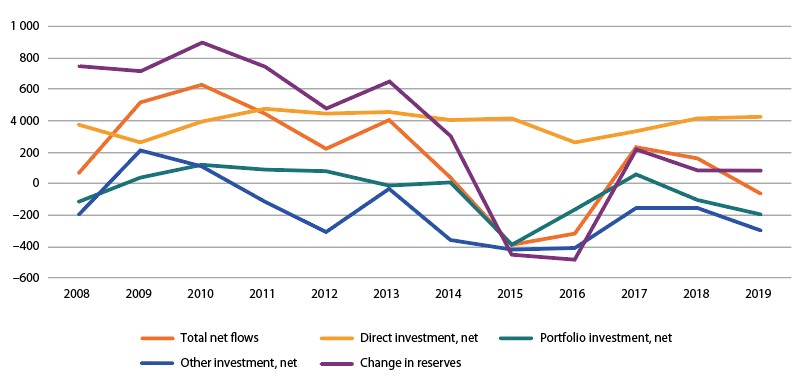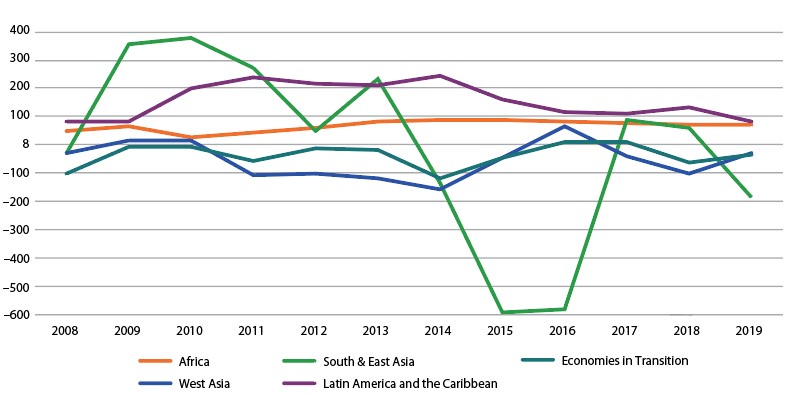The Addis Ababa Action Agenda recognizes that public policies, regulatory gaps and misaligned incentives pose risks, including to financing sustainable development, and that there are spillover risks to developing countries.
In the Addis Agenda, Governments specifically:
- Commit to pursue sound macroeconomic policies that contribute to global stability, equitable and sustainable growth and sustainable development, while strengthening our financial systems and economic institutions; and to strengthen international coordination and policy coherence to enhance global financial and macroeconomic stability
- Commit to work to prevent and reduce the risk and impact of financial crises, acknowledging that national policy decisions can have systemic and far-ranging effects well beyond national borders, including on developing countries
- Call on international financial institutions to further improve early warning of macroeconomic and financial risks
- Recognize the importance of strengthening the permanent international financial safety net
- Encourage increased dialogue among regional financial arrangements and strengthened cooperation between IMF and regional financial arrangements
- Urge the IMF to continue efforts to provide more comprehensive and flexible financial responses to the needs of developing countries
- Call on International financial institutions to support developing countries in developing new instruments for financial risk management and capacity building
- Request international financial institutions to provide support to developing countries pursuing sustainable development to assist them in managing any associated pressures on the national balance of payments
- Look forward to the special drawing rights review
Latest developments
Prior to the onset of the COVID-19 crisis, net capital flows to developing countries, in aggregate, were already expected to return to negative territory in 2019, although this was due to the effects of just one region (East Asia). However, higher demand for dollar liquidity following the global shutdowns as a response to COVID-19 led to an unprecedented shock to capital flows to developing countries in the first three months of 2020. Cumulative outflows from late January through March of 2020 surpassed the levels documented at the peak of the 2008 global financial crisis, indicating the largest capital outflows ever recorded. According to the IMF, investors removed around $83 billion from emerging markets during March 2020.
Net financial flows to countries in developing regions, 2008–2019
(Billions of United States dollars)

Source:IMF, World Economic Outlook (October 2019).
Note: Positive values denotes a net inflow of capital and an increase in reserves. A negative value indicates a net outflow of capital and a decline in reserves. 2019 value is a projection.
Net financial flows, by region, 2007–2018

Source:IMF, World Economic Outlook (October 2019).
Note: Positive values denotes a net inflow of capital and an increase in reserves. A negative value indicates a net outflow of capital and a decline in reserves. 2019 value is a projection.
Many countries have adopted flexible exchange rate regimes that broadly follow the “textbook” prescription to allow exchange rates to adjust freely in response to capital flow swings. That frees monetary policy to focus on domestic cyclical conditions in the spirit of a “one target – one instrument” approach. However, large swings in the exchange rate can be disruptive to the real economy as they change domestic prices of exports and imports relative to non-traded goods and services. It can also raise the cost of external debt servicing relative to domestic revenues, sometimes precipitating a debt crisis. Many countries thus deviate from the textbook framework in a variety of ways. Central bank intervention in foreign exchange markets to influence exchange rates is fairly prevalent, particularly among emerging market economies, and particularly in response to persistent capital inflows.
Read more on prudent macroeconomic management here.
At a time of high uncertainty and rising downside global risks, it is critical that Member States take action to strengthen the permanent global financial safety net (GFSN). Member States have called for a strong, quota-based, and adequately resourced IMF at the centre of the GFSN. Taking account of the challenges posed by higher interconnectivity and uncertainty in the global economy, all layers of the GFSN—countries’ own international reserve buffers, bilateral swap arrangements (BSAs), regional financing arrangements (RFAs) and the IMF—have expanded substantially since the 2008 global financial crisis. Nevertheless, gaps in the GFSN remain, including the need to strengthen collaboration between the IMF and RFAs and the availability of appropriate financing instruments. The IMF Executive Board has also noted “many countries do not have reliable access to BSAs or RFAs”.
Read more on the global financial safety net here.
Policy Brief/Notes
Relevant SDG indicator